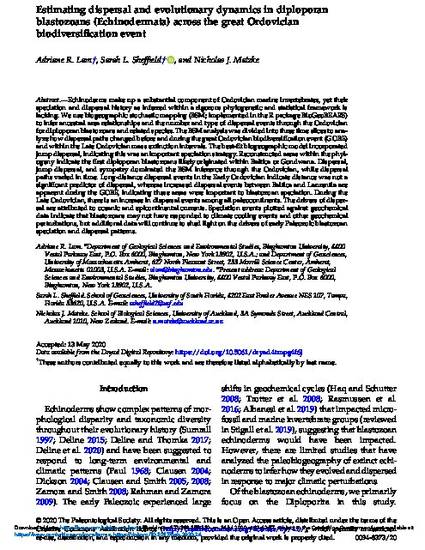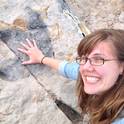
Echinoderms make up a substantial component of Ordovician marine invertebrates, yet their speciation and dispersal history as inferred within a rigorous phylogenetic and statistical framework is lacking. We use biogeographic stochastic mapping (BSM; implemented in the R package BioGeoBEARS) to infer ancestral area relationships and the number and type of dispersal events through the Ordovician for diploporan blastozoans and related species. The BSM analysis was divided into three time slices to analyze how dispersal paths changed before and during the great Ordovician biodiversification event (GOBE) and within the Late Ordovician mass extinction intervals. The best-fit biogeographic model incorporated jump dispersal, indicating this was an important speciation strategy. Reconstructed areas within the phylogeny indicate the first diploporan blastozoans likely originated within Baltica or Gondwana. Dispersal, jump dispersal, and sympatry dominated the BSM inference through the Ordovician, while dispersal paths varied in time. Long-distance dispersal events in the Early Ordovician indicate distance was not a significant predictor of dispersal, whereas increased dispersal events between Baltica and Laurentia are apparent during the GOBE, indicating these areas were important to blastozoan speciation. During the Late Ordovician, there is an increase in dispersal events among all paleocontinents. The drivers of dispersal are attributed to oceanic and epicontinental currents. Speciation events plotted against geochemical data indicate that blastozoans may not have responded to climate cooling events and other geochemical perturbations, but additional data will continue to shed light on the drivers of early Paleozoic blastozoan speciation and dispersal patterns.
Paleobiology, v. 47, issue 2, p. 198-220
Available at: http://works.bepress.com/sarah-sheffield/16/

Data available from the Dryad Digital Repository: https://doi.org/10.5061/dryad.4tmpg4f6j